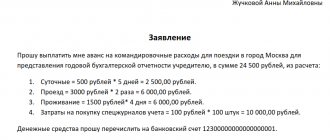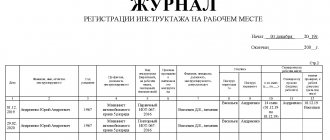Driver's work and rest schedule according to Labor Code
Several regulations are devoted to the legal regulation of the work of drivers.
The Labor Code devotes an entire chapter to this issue—chapter 51. It contains three articles:
- Article 328 sets out the rules for employment.
- Article 329 regulates the work schedule: the length of the drivers’ working day, breaks, and rest periods. It also says that the specific working conditions of drivers are regulated by the Ministry of Transport.
- Article 330 is devoted to labor discipline of employees associated with transport management.
| Penalties for errors in the work of a personnel officer are becoming more severe, and there are more and more changes in legislation. Take a distance learning course and you will be able to prepare for the inspection by identifying possible violations in advance. |
Work and rest schedule for drivers in 2021 according to the Ministry of Transport
Specific instructions for the formation and observance of the work and rest regime for drivers are contained in the Order of the Ministry of Transport of the Russian Federation dated October 16, 2020 No. 424 “On approval of the Peculiarities of the regime of working time and rest time, working conditions of car drivers.” This is the main document in practical work with drivers.
The order entered into force on January 1, 2021 and is valid until January 1, 2027.
This document establishes the specifics of the working hours of car drivers when this is part of their job responsibilities and individual drivers who independently drive a vehicle.
The order excludes the following categories of drivers:
- servicing state authorities and local governments in official cars;
- working in international transport;
- those who do not travel on public roads and move only within the boundaries of the enterprise;
- passenger cars of departmental security, fire and rescue vehicles, including ambulances, vehicles involved in liquidation of consequences or prevention of emergencies;
- vehicles of bodies carrying out operational investigative activities,
- drivers-military personnel in the performance of their military duties.
For all other drivers with whom an employment contract has been concluded, compliance with the regulations of the Ministry of Transport is mandatory. To protect your company from fines, make sure that local regulations comply with current legislation. Pay special attention to:
|
The driver's working hours are set in accordance with these standards:
- the maximum working time of the driver should not exceed 40 hours per week;
- by analogy with the previous paragraph, the maximum working day for a driver within 24 hours is 9 hours, with a possible increase to 10 hours, but not more than twice a week;
- The driver can increase this time by two hours to get to the parking lot or finish the trip.
Rest after a shift lasts at least 11 hours; drivers’ rest time between shifts can be reduced by a maximum of 2 hours and no more than three times a week.
Additional payments and allowances for drivers provided by law
In particular, this type of payment is stipulated in other documents - for example, in the staffing table, in addition to the number of positions and established salaries, the amount of additional payments must also be indicated in the case of certain specifics of work for vacancies.
Orders Also, the amount of additional payments and allowances is stipulated in administrative documents, in the same orders, because the Regulations on wages or bonuses only stipulate the conditions for the accrual of certain additional accruals, and the order indicates the conditions for the provision and the data of a specific employee, without which the accrual can be carried out It's unlikely to be possible. Payment procedure and rules It should be noted that local acts establish not only a list of allowances and additional payments, as well as their size, but also stipulate the payment procedure in accordance with the standards enshrined in Article 136 of the Labor Code of the Russian Federation.
I think that everyone knows that wages cannot be less than the minimum wage established in the Russian Federation. The use of a time-based calculation system is relevant in the following cases:
- provided that piecework earnings are not beneficial for the employee and may “underestimate” his actual productivity, which will significantly affect the final remuneration;
- if transport work cannot be normalized;
- when the transport work being carried out cannot be taken into account objectively.
This type of payment requires the organization of correct and timely timesheets of the actual time worked by each employee.
Attention/Salary/Additional payment for drivers' class The profession of a driver involves special specifics of work associated with certain difficulties: irregular working hours, dangers while driving, possible health problems.
Attention: The number of years worked as a driver of a vehicle is reflected in the formation of payments. Seniority affects the grade that is assigned to employees. Important However, this indicator is “unstable”. It can easily be lost, and also lost when changing jobs.
And yet, does classiness give the driver any additional payments from management? Next, we will talk about class and whether there is an additional payment for it to people working on the vehicle. Are payments for class required? The rank is awarded to employees at the workplace after certification. The employee's driving skills are assessed by a qualified commission.
Remuneration of drivers of trucks and ordinary cars
However, if such a clause is not provided, then the employer has the right not to provide his employee with additional payments. The availability and amount of additional payments for the existing category should be discussed in advance with the employer. Labor Code of the Russian Federation According to the Labor Code of the Russian Federation, the amount of additional payment for the assigned class to the driver is determined by the employer himself.
Specialists who have been awarded 1st or 2nd class can count on additional payments. The most common type of output, calculated in the volume of cargo transported over a certain distance. Unit of measurement of output: t*km = tkm.
Tariffs and coefficients are developed by the labor and wages department (or an authorized specialist) and cannot violate the lower limit of standards approved by the legislative framework of the Russian Federation.
Allowances and surcharges for drivers
Labor remuneration depends on the following factors:
- driver categories;
- driver class;
- working conditions (conditions of driving style, level of difficulty in driving a vehicle, etc.);
- availability of processing (exceeding planned indicators: operating hours, passenger capacity, tonnage, ton-kilometers, etc.);
- work schedule (daytime, nighttime).
Depending on the category of the driver, settlements with him can be carried out in the form of:
- Time (hourly) rates. This calculation system is used for specialists whose duties do not include traveling long distances, but require certain skills and craftsmanship.
Extra payment for drivers' class
Time-based wages are calculated as follows: Tariffs and coefficients are developed by the labor and wages department (or an authorized specialist), and cannot violate the lower limit of standards approved by the legislative framework of the Russian Federation.
Additional payments and allowances - additional remuneration for employees
But the categories themselves do not define anything. Class may or may not be established. This is an internal matter of each enterprise. An employee is assigned a qualification only after undergoing appropriate training, which is carried out in a training center at the expense of the employer. After training, he is issued a certificate with a special mark.
It determines the type of vehicle you are allowed to drive. The lowest qualification can be assigned to a citizen after vocational training during the first employment. Driver qualifications of 2nd and 1st classes are assigned by the qualification commission of a transport enterprise.
Amounts of surcharges Employers have the right to independently set premiums for the quality of drivers of trucks, cars and buses.
Driver's irregular working hours
Due to the nature of their professional activities, many drivers cannot work on the same schedule as the majority of employed citizens.
Paragraph 14 of the Regulations of the Ministry of Transport states that an irregular working day (IWD) can be established for drivers who:
- Drive passenger cars, except taxis.
- They work in the field: on topographic and geodetic work, as part of expeditions, at geological exploration stations.
In this case, shifts must be planned so that their number and duration of shifts must meet the legally established standards for the length of the working week.
Weekly rest should be provided on a general basis.
| Important! It follows from paragraph 14 that an irregular day cannot be introduced for everyone: drivers of trucks, buses, and taxis cannot set such a schedule. |
The definition of an irregular working day is given in Article 101 of the Labor Code of the Russian Federation. This is a special schedule under which some employees may periodically be required to work outside of their assigned working hours. The list of positions to which such a schedule is applicable should be documented: in the LNA or in the collective agreement. It is also necessary to spell out this feature of the regime in the employment contract. Consider the opinion of the trade union, if you have one.
What to do with those for whom NSD cannot be installed? Organize work according to a normal schedule, and if this is not possible, introduce summarized recording of working hours. In this case, it is necessary to strictly observe the work and rest regime.
| Important! Registration Previously, only drivers who were “caught” were fined for violating the work and rest regime. But from November 2021, employers are also responsible. This follows from Article 11.23 of the Administrative Code. Employers also have the obligation to prescribe the regime in local regulations and employment contracts. |
Next, we’ll talk in more detail about how to take into account drivers’ working hours and how to pay for their work if the day is irregular.
What allowances can be set in the staffing table for bus drivers?
The use of piecework wages is especially typical for truck drivers.
A non-tariff form of remuneration is introduced, as a rule, in commercial organizations. With this form of remuneration, the employee’s earnings depend on the final results of the work of the structural unit in which he works, or the entire enterprise as a whole, and on the amount of funds allocated by the employer to pay for labor. To develop these documents, the employer can be recommended to use similar acts of federal executive authorities as a basis, in particular the Regulations approved by order of the FSB of Russia dated August 2, 2007.
No. 393, as well as the Regulations approved by order of the State Fiscal Service of Russia dated September 28, 2007 No. 296. We wrote more about irregular working hours in the employment contract in the material at the link. From the answer “How to apply for additional payments and salary increments established by
If your organization is not covered by industry agreements or acts of executive authorities, you can set the amount of the premium yourself. Details in the materials of the Personnel System: 1.
Answer: How to formalize additional payments and salary allowances established at the initiative of the organization Establishing additional payments and allowances How to establish additional payments and allowances for an employee’s salary at the initiative of the employer The administration of an organization can independently establish additional payments and allowances for an employee’s salary ().
- V ();
- V ();
- in another local act of the organization, for example in (and the Labor Code of the Russian Federation).
- in another local act of the organization, for example in (and the Labor Code of the Russian Federation).
In addition, indicate the established additional payments and allowances with the employee (and the Labor Code of the Russian Federation).
An additional payment for combining professions is established for employees who, at the same enterprise, institution, organization, along with their main work stipulated by the employment contract, perform additional work in another profession (position) or the duties of a temporarily absent employee without being released from their main job.
In particular:
- for working on weekends;
- for expanding service areas, that is, an increased volume of work due to the replacement of an absent employee;
- for night work;
- for overtime hours;
- for dangerous working conditions.
How is a supplement different from a surcharge?
Of course, both the bonus and the additional payment are just incentive payments to staff salaries, which can also be temporary.
First of all, the management of the enterprise, as well as a special certification commission, must assess the working conditions of each individual category of workers. In accordance with the research results, a list of positions is determined that are entitled to receive an appropriate bonus in the event of an increase in labor intensity. Thus, benefits are most often provided to people working on production lines, as well as those employed in complex or hazardous industries.
The collective agreement reflects the following points:
- a list of preferential jobs that are subject to payment of bonuses;
- results of professional activity that must be achieved to receive a bonus;
- the procedure and amount of payment is indicated.
The procedure for paying bonuses must also be confirmed by relevant orders.
Sample order for additional payment for intensity and increase in the volume of work performed. The form of the order for additional payment is determined by the employer independently. However, it is important to understand that an order, unlike a memo, is a primary accounting document, since it reflects the economic activities of the enterprise, and therefore must contain a number of mandatory details (Article 9 of the Law “On Accounting” dated December 6, 2011 No. 402- Federal Law):
- name of company;
- date of issue of the order;
- document's name;
- last name, first name, patronymic and position of the person in respect of whom the operation is being carried out;
- the essence of the operation and monetary measurement;
- basis of the order;
- manager's signature;
- place for the worker’s signature confirming the fact of familiarization with the document.
The completed order is sent to the accounting department to calculate the premium.
The provision should not violate the norms and standards approved by the legislation of the Russian Federation. You can read more about the general principles for developing the Regulations in my article. The regulations must be developed in accordance with the specifics of transport production, taking into account the system of organization and work schedule of driving personnel, the complexity and nature of the implementation of transport tasks.
This document extends its legal force to persons (drivers) carrying out their labor activities on the basis of drawing up an employment contract with an enterprise. Here we will not talk about the categories indicated on the driver’s license. The wide variety of automotive equipment and areas of its use impose special requirements on the organization of both work and remuneration of employees of motor transport departments.
- This is a physiological category due to the fact that it is characterized by the consumption of labor, emotional, mental and other resources.
- Labor intensity depends on the methods and rates that characterize the use of labor and human resources, and is also a factor determining labor productivity.
- This category is considered and assessed in accordance with standards established at the state level.
- Correct and timely assessment of labor intensity makes it possible to improve the conditions of workers involved in the production process.
Thus, we can say that intensity combines the characteristics of an economic and physiological factor that determines the volume of output. However, we should not neglect the organizational factor of work at the enterprise.
Based on these features, we can distinguish several categories of specialists in driving and operating vehicles: 1. passenger vehicles (vehicle capacity does not exceed 5 seats). 2. minibuses (vehicle capacity from 5 to 18 seats). 3. buses (vehicle capacity more than 18 seats). 4.
- freight transport operating within a radius of 50 km;
- freight transport operating within a radius of more than 50 km;
- freight transport carrying out international transportation, including:
7. The decision to maintain class is made by the manager at the new place of work. Most often, at a new job you will have to re-confirm your awesomeness. Driver classification has three levels:
- III class – driver starting his work experience;
- Class II - a driver who has a driver’s license to drive a vehicle of “B”, “C”, “E” and/or “D” categories, as well as at least a continuous three-year driving (III class) work experience at this enterprise;
- Class I - a driver who has a driver’s license to drive a vehicle of “B”, “C”, “D”, “E” categories, as well as at least two years of uninterrupted work experience as a Class II driver at this enterprise.
The premium for class is approved by the head of the enterprise in the form of a fixed coefficient.
Info
Therefore, employees have the right to combine more than two positions in the same organization. The exception is when there is a general ban on combining positions.
We invite you to familiarize yourself with: State housing certificate - what it is, who is eligible and the waiting list for receiving it
Attention
For example, the head of an organization cannot combine the position of chief accountant in a credit organization (Part 2 of Article 276 of the Labor Code of the Russian Federation, Article 7 of Law No. 402-FZ of December 6, 2011). Question from practice: is it possible for a part-time worker to work in the combination mode? Yes, it is possible.
The combination procedure is defined in Article 60.2 of the Labor Code of the Russian Federation. The legislation does not contain a ban on establishing a combination of jobs for part-time workers.
Thus, the combination can be established for a part-time worker in a general manner. The exception is when there is a general ban on combining positions.
It should be remembered that the part-time worker will perform part-time work for the time specified in his employment contract.
Control of the lifting mechanism of a dump truck, the crane installation of a truck crane, the pumping installation of a tank truck, the refrigeration unit of a refrigerator, sweeping and cleaning mechanisms and other equipment of specialized vehicles. Refilling vehicles with fuel, lubricants and coolant.
Providing vehicles for loading and unloading cargo and monitoring the loading, placement and securing of cargo in the back of the vehicle. Elimination of minor faults that arose during work on the line that do not require disassembling the mechanisms. Announcement by the bus driver of stopping points and the procedure for paying for travel using a radio installation, installation of composters, sale of subscription books at stopping points.
Additional payment to drivers for irregular working hours
An important feature of working with irregular hours is that the employer warns the applicant in advance about such a schedule and negotiates the corresponding salary. That is, the remuneration of the driver who agreed to the agreed conditions is already specified in the employment contract and does not provide for additional payments for irregularity.
When registering for newcomers, draw their attention to this point. This will reduce the likelihood of misunderstandings in the future.
If payment for the driver’s irregular working hours is left at the discretion of the employer, then the Labor Code takes care of compensation. Article 119 provides for additional paid leave for workers with irregular hours. Minimum 3 days. If desired, the employer can offer more, but less is a violation.
For employees who did not use additional leave, it can be compensated with money, because this is a period in excess of the minimum 28 days. To receive money, the driver must write an application for compensation. You will get a kind of additional payment for irregular working hours.
| Remember! Within the framework of labor law, an irregular day means the opportunity to deviate from the norm sometimes. If this happens constantly, the State Tax Inspectorate will consider a violation. In addition, the employer will have to pay extra for overtime work. |







